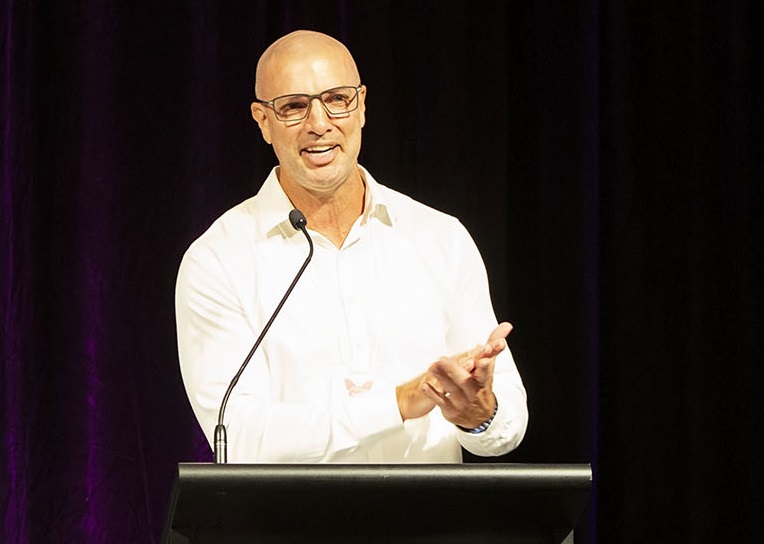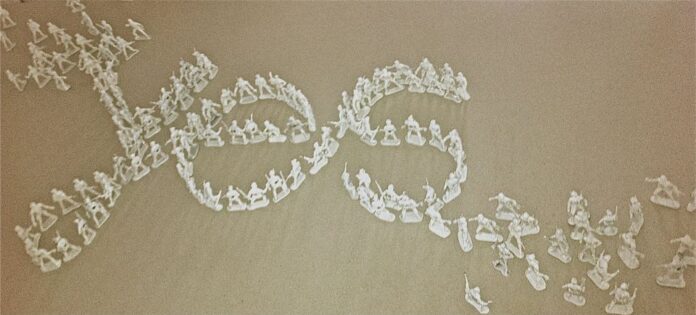A circle of eager entrepreneurs shout ideas across a table, and slap new proposals onto a marker-streaked whiteboard as the final member of their group arrives baring a needed restock of coffees. Some concepts stick, others are tossed aside, but in no time at all, a clearer image is born. This is how a typical design sprint might go. It’s a short and intense bout of effort where a team of devoted experts compress what is usually a long process of designing, prototyping, and testing a new product or idea. It’s difficult and it’s powerful, but why would we want to place such pressure on ourselves?
Parkinson’s Law
In the first line of an essay written in a 1995 issue of The Economist, the British historian, Cyril Northcote Parkinson wrote: “Work expands to fill the time available for its completion” (1). In other words, if a project needs to be done in a year, it’ll be done in a year. If it needs to be done in a month, it will be done in a month. And if it needs to be done today, it’ll be done today.
This adage has since taken on the moniker of “Parkinson’s law”. The point of the essay was to encourage a thought experiment: what if you had to complete a project with an aggressive timescale? For instance, if you had to build a skyscraper in a week, how would you go about doing it? What options would you choose? What trade-offs would you make?
Murray Berghan, managing director of Sensitive Group, began two businesses during his undergraduate degree, an advertising agency, and a clothing manufacturing business. Such a short timescale is a lot to begin a single business, let alone two, and he did this with the time restraints a tertiary education brings.
Of course, there are some projects you couldn’t finish within aggressive timescales, like building a skyscraper in a week, but the thought experiment should have you consider what is possible when you implement the right thought process.
Design Sprints
Originating from Google, a Design Sprint is a time-constrained burst of dedicated effort by developers to lift a product or service from a concept into a fully-fledged business idea. It’s usually five days long and employs a user-focused team to answer critical questions around the design, prototyping, and testing of ideas. The intention is to reduce the risk of a concept failing by rapidly testing it around the intended use of the service or product, and often employs the latest breakthroughs in innovation, behavioral science, and design (2).
How to use a Design Sprint
Each day is split into a task (2).
Monday
Monday is dedicated to mapping out the week. Starting with the end in mind, you determine your overarching goal and what you want to achieve by Friday. At the end of the day, you should have a succinct list of the challenges and targets to solve in one week.
Tuesday
Now that you understand the problem and your targets, Tuesday is going to be about focusing on solutions to the challenge you proposed. You begin the day by taking inspiration from existing ideas which you will remix and try to improve on. You will also plan the customer test by recruiting customers who meet your customer criteria.
Wednesday
With your stack of solutions to your problems at hand, Wednesday begins with a critique of each solution. You don’t have time to prototype and test each one, so you need to narrow down your list to the most viable options. And once you have chosen the best options, you spend the remainder of the day weaving each into a step-by-step plan: from design and prototyping to testing.
Thursday
You want to use this day to create something presentable for your test customers on Friday. Realistically, you might not be able to finish an entire functioning prototype, but you don’t have to. You only need to focus on the “customer-facing” aspect of your prototype. In other words, you only need to develop what the customer is going to see.
Friday
By Friday, you should have a prototype to present to your customers. This final day is then spent interviewing customers and noting how they react to the prototype. You take notes and learn how this information can be used to improve your designs going forward. When all is said and done, you’ll have a fair idea of how viable your prototype is, how much more work is needed to be done, and what actions need to be taken next.
What are NFPs, NGOs, and social enterprises?
NFPs
Not-for-profits (NFTs) are organizations that operate solely to fulfill their objectives without intending to make a profit or increase the personal gain of their members (3). All profit is reinvested into carrying out the NFPs mission statement, and excess profits must either be used to launch projects or carry out the day-to-day activities of the organization. Murray Berghan has used his business experience to help several NFPs like The Deaf Society, Caring for Carers Australia, and Save the Children Fund.
NGOs
Non-government organizations (NGOs) are NFPs that operate independently from local, state, federal, or international government oversight (4). While an NFP might be a church or community arts center, NGOs are often (but not always) larger organizations that tackle political, social, and humanitarian issues like human trafficking and famine, or natural disasters like hurricane relief efforts.
Social enterprises
In contrast to NFPs and NGOs, a social enterprise is an organization that operates as a business, earning an income through sales and trade. However, just like NFPs and NGOs, their main objective isn’t profit. For example, Raise Your Spirit, is a social enterprise directed by Murray Berghan that helps young adults living with disabilities. Such organizations use funds for humanitarian goals such as improving local communities, helping the environment, providing access to training and employment, or tackling social problems like poverty (5).

How can a Design Sprint Help an NFP, NGO, or social enterprise?
While NFPs, NGOs, and social enterprises have motivations other than profit, there are several ways a design sprint can be utilized to accomplish its goals: A Design Sprint can help determine the processes, resources, and time required to disseminate aid or begin a community program. You can also develop sustainable solutions to challenges before the program begins and build a consensus on the appropriate steps to take. Most usefully, since the users are at the center of the Design Sprint process, you can see first-hand whether your program has the desired effect or solves a pertinent problem.
While Design Sprints aren’t going to solve every problem an NFT, NGO, or social enterprise will face, it’s a useful tool to have at hand. When time is of the essence, when you have pertinent questions about a concept you want to implement, or if want to see if your idea solves a specific problem, then a Design Sprint might just be the solution you need.
References
1. Parkinson CN. Parkinson’s Law. The Economist [Internet]. 1955 Nov 19 [cited 2022 Feb 7]; Available from: https://www.economist.com/news/1955/11/19/parkinsons-law
2. The Design Sprint — GV [Internet]. [cited 2022 Feb 7]. Available from: http://www.gv.com/sprint
3. Office AT. Starting an NFP [Internet]. Australian Taxation Office; [cited 2022 Feb 7]. Available from: https://www.ato.gov.au/non-profit/getting-started/starting-an-nfp/
4. Not-for-profits, charities & NGOs. What’s the difference? [Internet]. GradAustralia. 2019 [cited 2022 Feb 7]. Available from: https://gradaustralia.com.au/career-planning/not-for-profits-charities-ngos-whats-the-difference
5. Victoria B. Social enterprise [Internet]. Business Victoria. 2021 [cited 2022 Feb 7]. Available from: https://business.vic.gov.au/business-information/start-a-business/business-structures/social-enterprise








